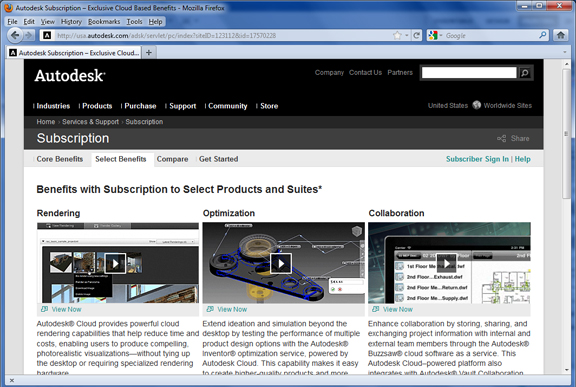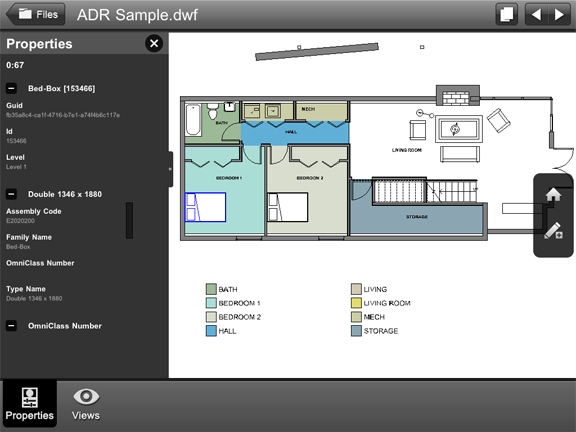September 27, 2011
If you have ever purchased something through Amazon.com (perhaps a book, CD, or DVD), you may already be an Amazon cloud club member, with the privilege to access up to 5 GB of online storage space. Through this free storage offer (launched in March), people who have registered with Amazon can get what amounts to a virtual vault, available to store sound files, digital images, video clips—pretty much anything that can be saved in bits and bytes.
This week, Autodesk announced something similar. If you’re an Autodesk subscriber, the privilege to access Autodesk Cloud—roughly a dozen cloud-hosted functions embedded in the company’s design software titles, along with 3 GB of storage space—is now yours.
Going Beyond Online Vaults
Critics often cite security and encryption—or a lack of them—as vulnerabilities of the emerging cloud-computing model; however, the use of virtual vaults is clearly gaining momentum among consumers and professionals alike, as seen by the increasing usage of cloud-hosted storage like Dropbox in group projects.
Data storage is part of the recently launched Autodesk Cloud. Perhaps more important, Autodesk’s strategy also includes the deployment of remote servers—equipped with far more processing power than what’s typically available in desktops and laptops—to deliver software functions.
The list of initial web services made available to Autodesk subscribers include:
- Autodesk Cloud rendering, which allows you to render photo-realistic scenes and 3D images of products through remote hardware;
- Autodesk Inventor optimization, which allows you to experiment with multiple design alternatives and select the best;
- Autodesk Revit Conceptual Energy Analysis, which allows you to analyze building energy consumption and energy-related costs;
- Autodesk Green Building Studio, which allows you to obtain environmental footprint of architectural designs and experiment with alternatives; and
- Autodesk Buzzsaw software as a service (SaaS), which allows you to collaborate, manage data, and manage projects online.
The initial round of web services are not available to Autodesk customers without subscription. The plan may be the company’s strategy to lure more people to sign up for its annual subscription, making it easier to justify the added cost with cloud-hosted benefits.
New Territories for the Design Software Maker
The use of web services, which bypasses the need to install and master professional software packages, has led Autodesk to tiptoe into consumer-friendly offerings (historically not Autodesk’s primary focus) with applications such as Autodesk Homestyler software and Autodesk Seek. Though not highly publicized, Autodesk business segments now include a Consumer Group, formed less than a year ago.
Products introduced through Autodesk Consumer Group showed “mixed success,” but “something started to change with tablets,” noted Andrew Anagnost, Autodesk’s VP of suites and web services. Among Autodesk’s tablet and smartphone apps, consumer-friendly SketchBook Mobile stands apart as one of the greatest successes.
Some desktop clients that used to be a standard part of Autodesk products, such as Autodesk Design Review, may also be transitioning to become mobile apps. Design Review Mobile, released on September 25, is now available for iPhone, iPad, and iPod Touch at Apple app store. Design Review Mobile gives tablet and smartphone users instant access to drawings and files saved on Autodesk Cloud.
As Autodesk expands its web services, the company may have to consider new licensing schemes: For example, giving away a basic level of rendering rights for free, but charging subscribers additional fees for excessive demands. In addition, Autodesk must now take on additional responsibilities to ensure its cloud-hosted storage and services are reinforced with robust fail-over, replication, encryption, and data synchronization plans—something the company previously didn’t need to worry about.
Subscribe to our FREE magazine, FREE email newsletters or both!
About the Author
Kenneth Wong is Digital Engineering’s resident blogger and senior editor. Email him at [email protected] or share your thoughts on this article at digitaleng.news/facebook.
Follow DE







